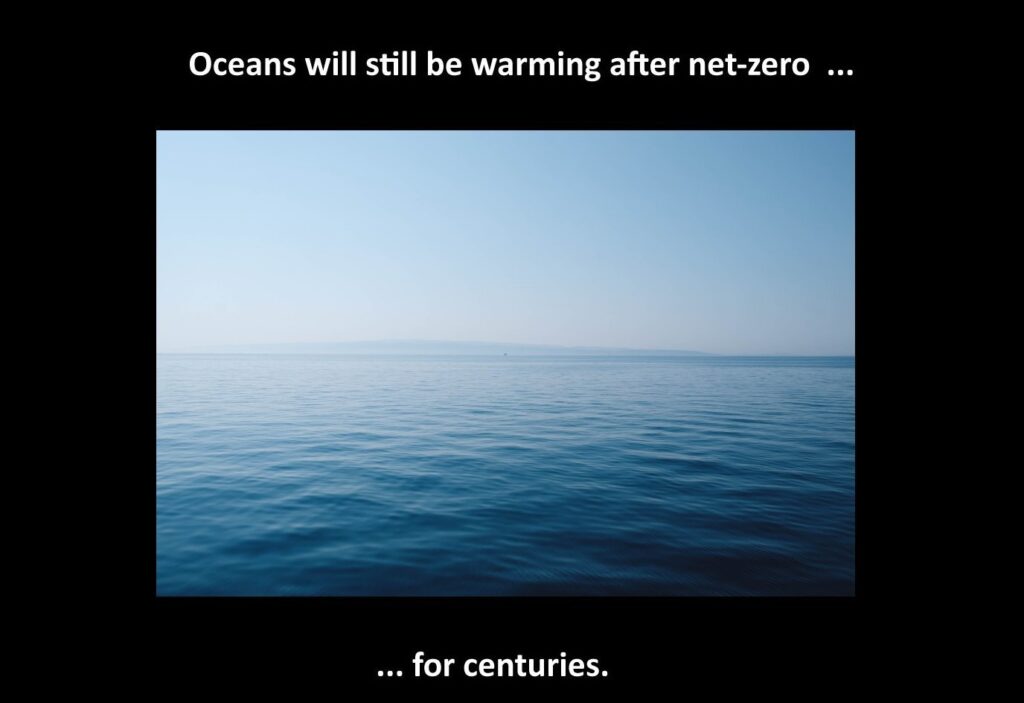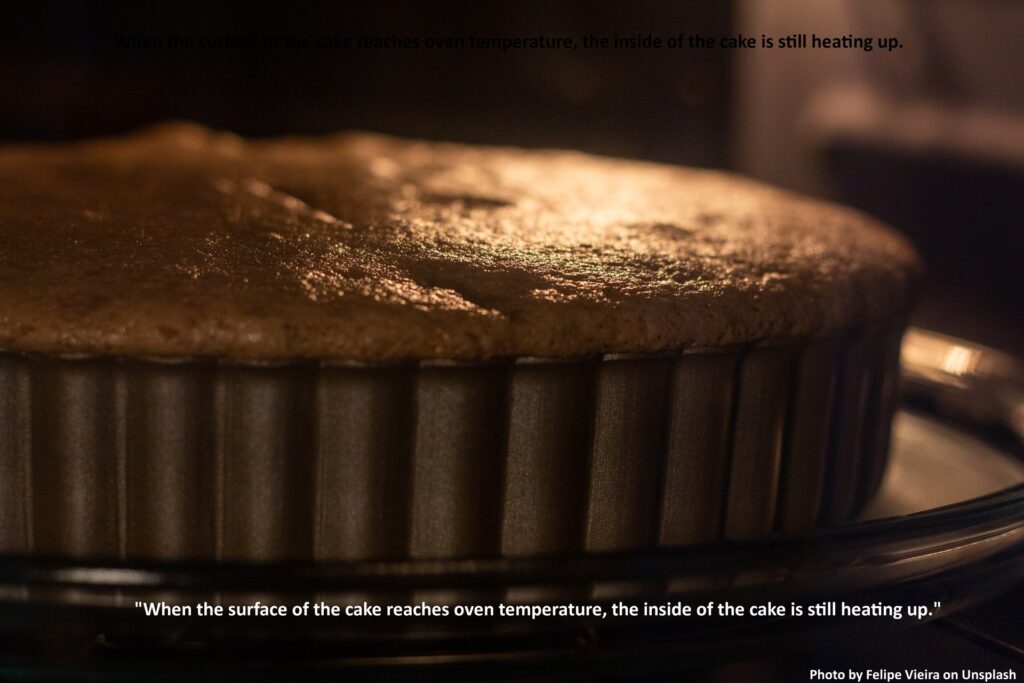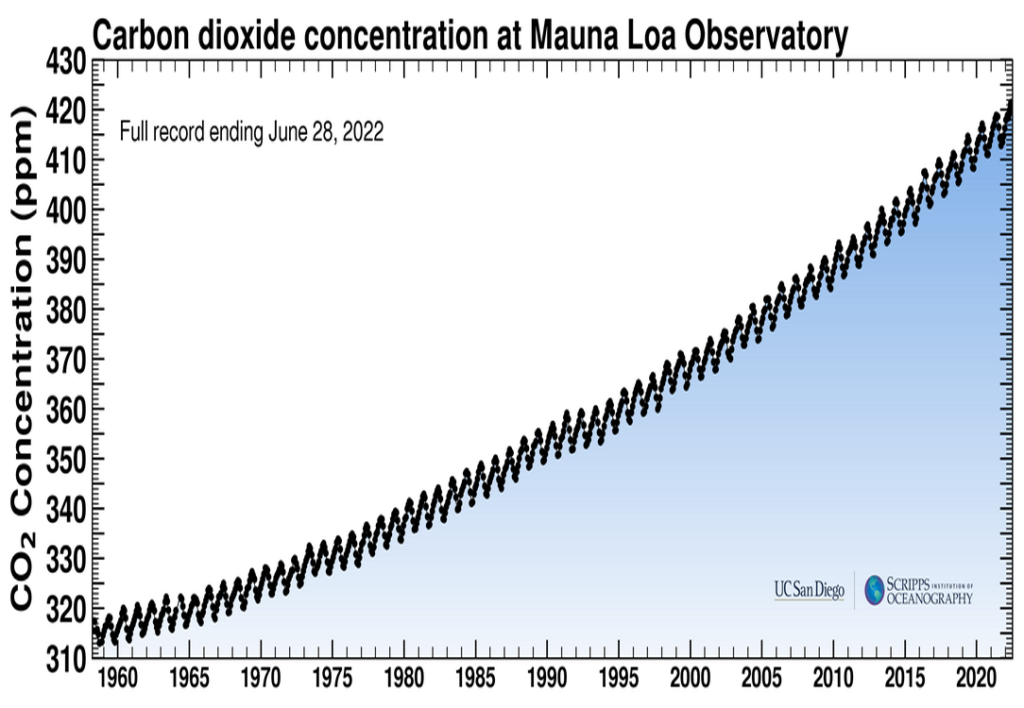Net-zero is not good enough

According to some climate models, the surface temperature of the Earth stabilises when net-zero greenhouse gas emissions are achieved. This does not stop the Earth from heating as:
- Ice keeps melting
- Oceans keep warming
- Permafrost keeps thawing
- Wetlands keep emitting
These mean net-zero is not good enough.
It is worrying that these processes cause climate feedbacks, climate feedbacks, which were worryingly absent in the climate models used in the IPCC AR5.
Cooking a cake and cooking the Earth

When the surface of the cake reaches oven temperature,
the inside of the cake is still heating up.
I have been very surprised by the lack of understanding about the way in which Earth is warming. the cake will be an analogue of the Earth, for those who misunderstand.
When the cake is put into the oven and the heat switched on, electricity heats the oven till it reaches 130 °C. Soon after, the surface of the cake reaches 130°C (well nearly!) and stays at that temperature. Just below the surface, the cake is still heating. It takes several hours for the heat to penetrate deeper.
The greenhouse effect is heating the Earth due to extra greenhouse gases in the atmosphere. In the cake analogue these gases are like the electricity that heats the oven.
Over the past two centuries greenhouse heating has increased as concentrations of greenhouse gases in the atmosphere. That’s like turning up knob regulating the electricity to heat the oven.
If greenhouse gas concentrations stop increasing, the greenhouse heating of the Earth reaches a plateau. At this stage, greenhouse heating has not stopped: It’s just not increasing. That’s like leaving the oven’s knob in a fixed position.
According to climate models, if emissions of the main greenhouse gas, CO2, becomes net-zero, Earth’s surface temperature will remain constant for centuries. (The concentration of gases falls slightly cutting the heating but it becomes harder to transfer heat into the middle of the Earth.)
Like the cake, Earth’s average surface temperature will stop rising soon after greenhouse heating stops increasing. That’s when the concentration of greenhouse gases in the atmosphere stops rising.
Average global surface temperature and other measures
The Earth’s average surface temperature is the main measure of the severity of climate change: It can be correlated with many of effects of climate change like storms, heatwaves and droughts.
The distribution of temperature over the globe also matters. Surface temperatures in polar regions are rising much faster than the average. This lessens the temperature difference between equatorial and polar regions, which has the effect of weakening the Jet Stream. This is causing weather patterns to become more variable. For example:
Storm-Steering Jet Stream Could Shift Poleward in 40 Years
The consequences [of a weakening Jet Stream] could be dramatic: shifts in rainfall patterns across the midlatitudes and an increase in droughts, heat waves, floods and other extreme weather events in Europe and the eastern U.S.
Another important measure is the increase in heat stored below the surface of the Earth. This is mostly stored as ocean heat content but also the heat absorbed by melting ice mass and the heat absorbed as permafrost thaws.
Predictions
Medium complexity climate models show that when (if?) human caused CO2 emissions reach net-zero, the rise in the average surface temperature of the Earth will stop. Some scientific opinion hints that climate consequences will then more or less stop. Last year Dr Zeke Hausfather wrote this:
The best available evidence shows that … warming is likely to more or less stop once carbon dioxide (CO2) emissions reach zero, meaning humans have the power to choose their climate future.
Will global warming ‘stop’ as soon as net-zero emissions are reached?
Zeke Hausfather, Carbon Brief 29th April 2021
By ‘warming’, Dr Hausfather means that the Earth’s surface will not be becoming warmer. However, the Earth below the surface will still be warming. The cake-in-the-oven example above mirrors this situation:
Soon after, the surface of the cake reaches 130°C (well nearly!) and stays at that temperature. Just below the surface, the cake is still heating. It takes several hours for the heat to penetrate deeper.
See above.
At net-zero emissions the Earth’s average surface temperature soon stops rising (i.e. it is ‘stabilised’) but the heat content of the Earth will still be rising: the oceans will be getting hotter, ice sheets will still be melting, permafrost still thawing and wetlands emitting more methane. Consequences include:
- Hotter Oceans causing sea level rise through thermal expansion.
- Hotter Oceans causing death of sea life.
- Hotter Oceans causing rapid intensification of storms
- Melting ice causing sea level rise
- Melting ice destabilising ocean circulation (e.g. the Gulf Stream)
- Melting ice causing less radiation to be reflected to space
- Hotter Oceans causing rapid intensification of storms
- Thawing permafrost releasing greenhouse gas
- Warming wetlands releasing greenhouse gas
The rise in the average temperature of Earth’s surface does stop when emissions of CO2 emissions become net-zero. However, the above list of consequences will continue until the concentrations of greenhouse gases returns to the concentrations that were in the atmosphere before the industrial revolution. To achieve this greenhouse gases must be extracted from the atmosphere so their concentration falls.
But concentrations of greenhouse gases won’t go down easily. At present they are accelerating in the wrong direction.

